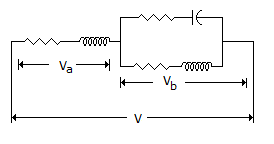Electronics and Communication Engineering - Networks Analysis and Synthesis
Exercise : Networks Analysis and Synthesis - Section 6
- Networks Analysis and Synthesis - Section 14
- Networks Analysis and Synthesis - Section 27
- Networks Analysis and Synthesis - Section 26
- Networks Analysis and Synthesis - Section 25
- Networks Analysis and Synthesis - Section 24
- Networks Analysis and Synthesis - Section 23
- Networks Analysis and Synthesis - Section 22
- Networks Analysis and Synthesis - Section 21
- Networks Analysis and Synthesis - Section 20
- Networks Analysis and Synthesis - Section 19
- Networks Analysis and Synthesis - Section 18
- Networks Analysis and Synthesis - Section 17
- Networks Analysis and Synthesis - Section 16
- Networks Analysis and Synthesis - Section 15
- Networks Analysis and Synthesis - Section 1
- Networks Analysis and Synthesis - Section 13
- Networks Analysis and Synthesis - Section 12
- Networks Analysis and Synthesis - Section 11
- Networks Analysis and Synthesis - Section 10
- Networks Analysis and Synthesis - Section 9
- Networks Analysis and Synthesis - Section 8
- Networks Analysis and Synthesis - Section 7
- Networks Analysis and Synthesis - Section 6
- Networks Analysis and Synthesis - Section 5
- Networks Analysis and Synthesis - Section 4
- Networks Analysis and Synthesis - Section 3
- Networks Analysis and Synthesis - Section 2
1.
The three sides of an admittance triangle denote
Answer: Option
Explanation:
Admittance triangle depicts admittance Y and its components G and B.
2.
A step voltage E is applied to an R-L series circuit. At t = 0, the current in the circuit is
Answer: Option
Explanation:
Inductance does not allow the current to increase instantaneously.
3.
To find current in a resistance connected in a network, Thevenin's theorem is used VTH = 20 V and RTH = 5 Ω. The current through the resistance
Answer: Option
Explanation:

4.
In figure, the magnitude of V


Answer: Option
Explanation:
V depends on magnitudes and phase angles of Va and Vb.
5.
A step voltage E is applied to a series R-L circuit. The rate of change of current is maximum at t =
Answer: Option
Explanation:

Quick links
Quantitative Aptitude
Verbal (English)
Reasoning
Programming
Interview
Placement Papers